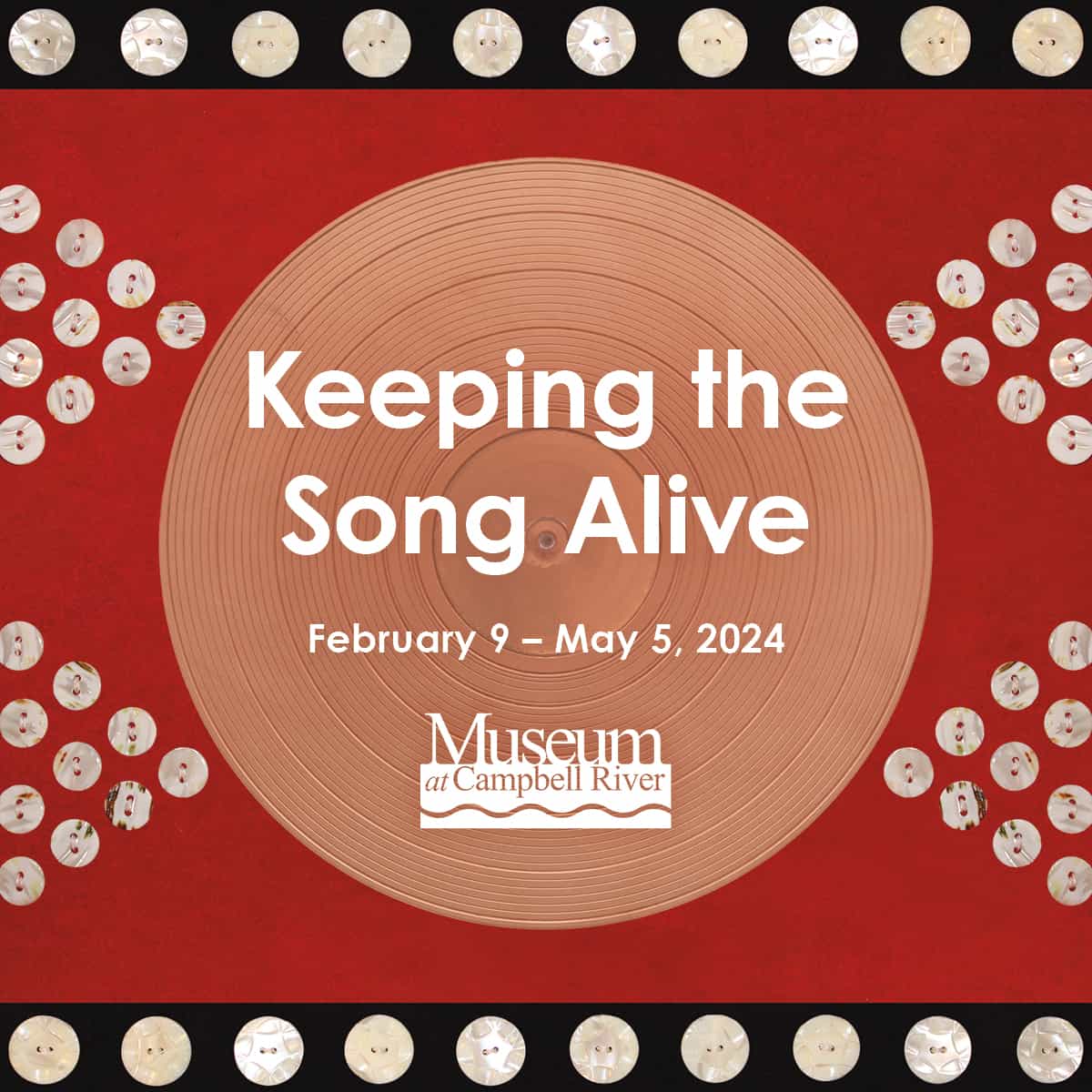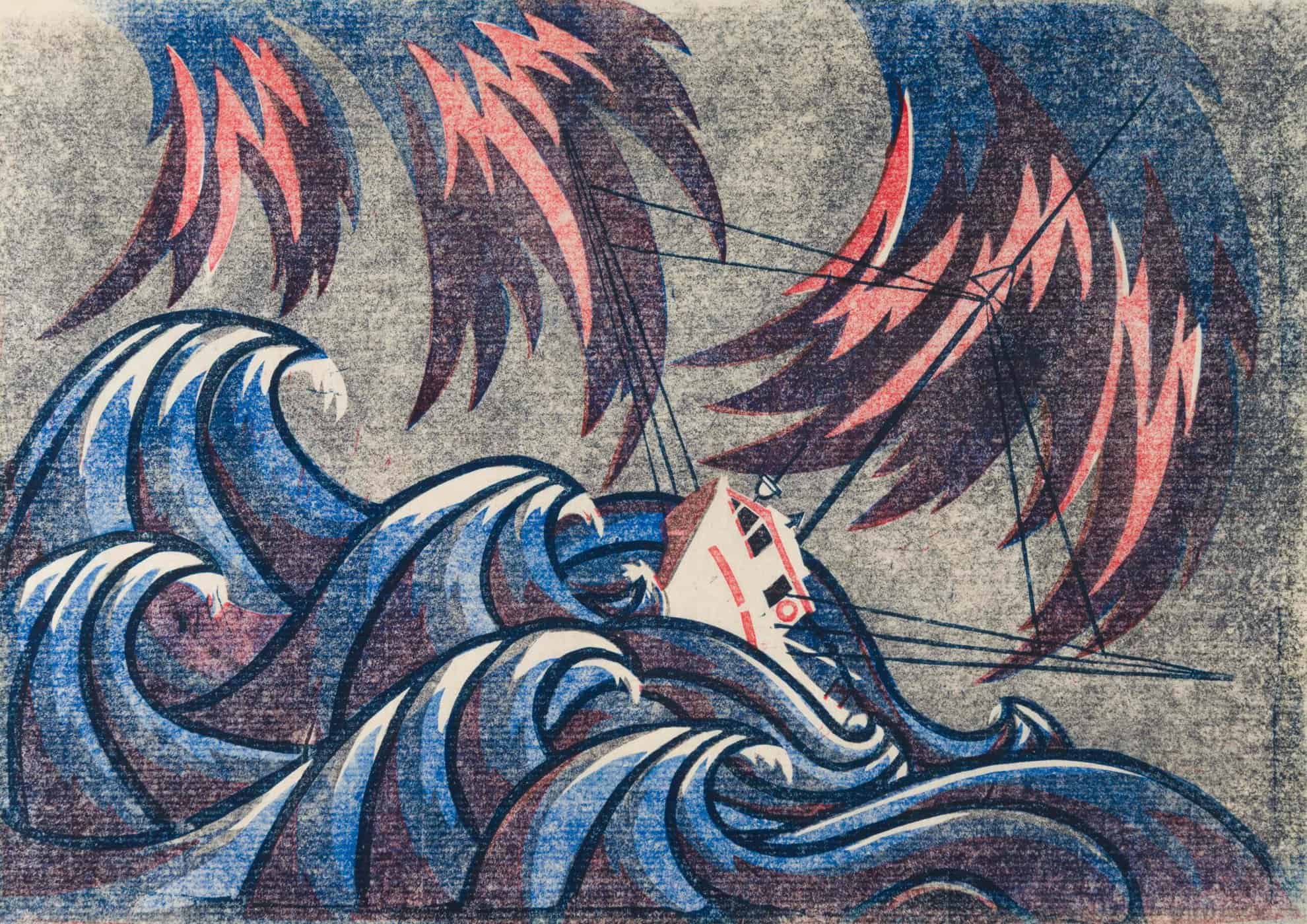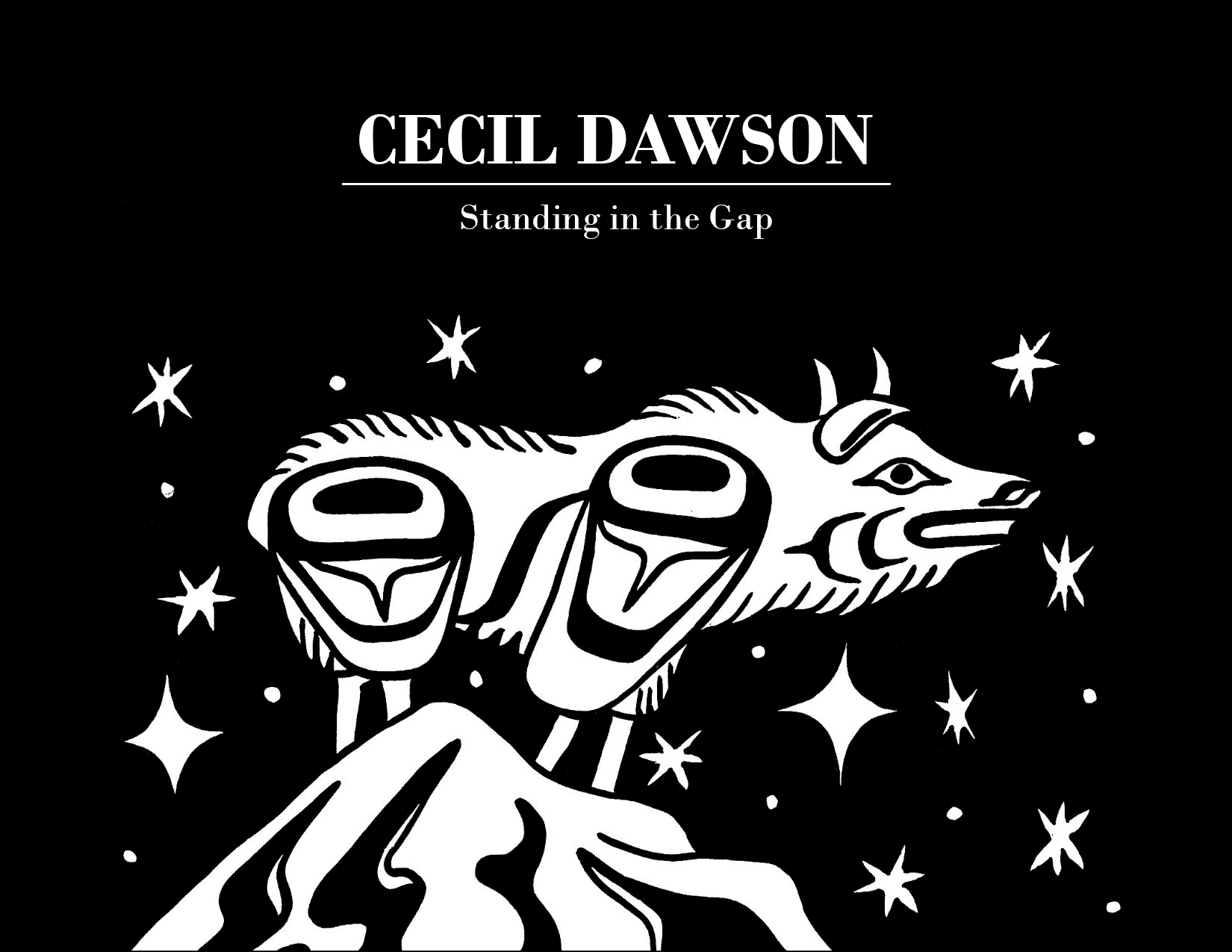Current Exhibit
Keeping the Song Alive
The Museum at Campbell River is pleased to be the first stop of a new traveling exhibit Keeping the Song Alive. Developed by the Bill Reid Gallery of Northwest Coast Art, the temporary exhibit is open from February 9 to May 5, 2024. Guest curated by Cheryl Kaka‘solas Wadhams and co-developed with the Jewish …
Past Exhibits
Sybil’s Students: A Local Legacy
April 19 to October 22 The art and life of Sybil Andrews has a far reaching impact on Campbell River, particularly in the work of her devoted students whom she mentored, encouraged, and supported. This exhibition focuses on the work of her talented students and how her legacy shines brightly …
Cecil Dawson: Standing in the Gap
March – November, 2022 This award winning exhibit at the Museum at Campbell River explores the impacts of colonization through the experiences of one family, and one artist, Kwakwaka’wakw artist and Hereditary Chief G̱ixkastallasame-gi, or Cecil Dawson. His contemporary artworks interpret this hurtful history and its continuing impact upon our …
Sacred Journey Exhibition
October – November 2021. The Museum at Campbell River hosted the first stop for the traveling exhibit Sacred Journey. The Sacred Journey Exhibit immerses the audience into the world of Indigenous canoe culture of the Pacific Northwest Coast. Almost lost, the ocean-going canoe has seen a remarkable resurgence over the last three …




